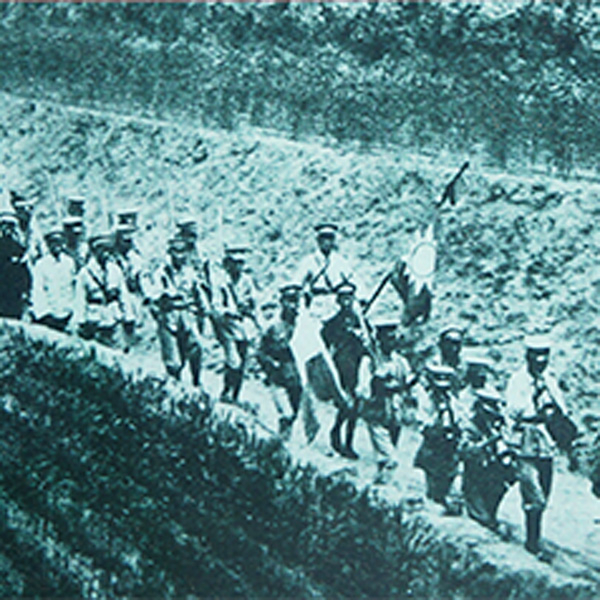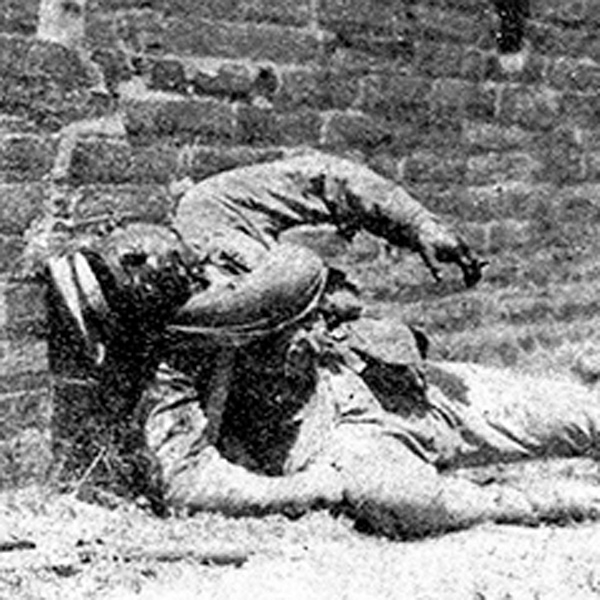The first cooperation between the Kuomintang of China (KMT, 中國國民黨) and the Chinese Communist Party (CCP, 中國共產黨) lasted from the convening of the First National Congress of the Kuomintang of China in January 1924 to the end of the first stage of the Northern Expedition in April 1927.
After Sun Yat-sen’s (孫中山) death, the KMT wanted to fulfil his aspiration of reunifying China and started preparing for the Northern Expedition to fight warlord Zhang Zuolin (張作霖) of the Fengtian clique (奉系) and warlords Wu Peifu (吳佩孚) and Sun Chuanfang (孫傳芳) of the Zhili clique (直系). On 1 July 1925, the southern revolutionary Nationalist Government was established in Guangzhou (廣州) and named the troops under its command the National Revolutionary Army (NRA, 國民革命軍) in August of the same year. On 9 July 1926, the NRA took the oath of the Northern Expedition in Guangzhou, with Chiang Kai-shek (蔣介石) as the commander-in-chief. The NRA, with forces from both the KMT and the CCP, eliminated the main force of Wu in the provinces of Hunan (湖南) and Hubei (湖北), defeated Sun’s army in the provinces of Jiangxi (江西) and Fujian (福建), and advanced from Zhejiang Province (浙江) to Nanjing (南京) and Shanghai (上海) with great momentum. The Nationalist Government headed by Wang Jingwei (汪精衛) also moved from Guangzhou to Wuhan (武漢) in January 1927.
However, just as the Northern Expedition was going well, some KMT members felt threatened by the CCP’s launch of the workers and peasants movements and its growing strength. On 12 April 1927, Chiang launched the “Party Purge” in Shanghai (aiming to purge CCP members from the KMT), which led to the breakdown of the first KMT-CCP cooperation. The Nationalist Government in Wuhan did not follow the “Party Purge” launched by Chiang initially. Therefore, Chiang established a new nationalist government in Nanjing on 18 April 1927, which became known as the Nanjing-Wuhan Split. However, on 15 July of the same year, Wang and his associates, who led the Nationalist Government in Wuhan, also decided to break with the CCP. Before long, Wang announced to move the capital of the nationalist government to Nanjing, which was known as the Nanjing-Wuhan Reconciliation.
The “Party Purge” suspended the Northern Expedition. In 1928, Chiang launched another stage of the expedition, and the NRA conquered Ji’nan (濟南) on 1 May of the same year. As Japan was afraid of China’s reunification, it instigated the May 3rd (Ji’nan) Incident, killing many civilians and NRA soldiers. The NRA made a detour around Ji’nan to avoid a direct conflict with the Japanese and continued to advance northward, successively recovering the provinces of Henan (河南) and Hebei (河北). Warlord Zhang realised that he would be no match for the NRA and withdrew from Beijing (北京) on 3 June. However, on his way to Shenyang (瀋陽) the next day, he died of serious injuries in a bomb explosion in Huanggutun (皇姑屯) engineered by the Japanese army. On 8 June, the NRA took over Beijing and later renamed it Beiping (北平). On 29 December of the same year, Zhang’s son Zhang Xueliang (張學良) announced via telegram to the whole country to obey the leadership of the Nanjing Nationalist Government. It was known as the Northeast Flag Replacement. To this extent, China was generally reunified and the Nationalist Government became the only regime representing the country internationally.








